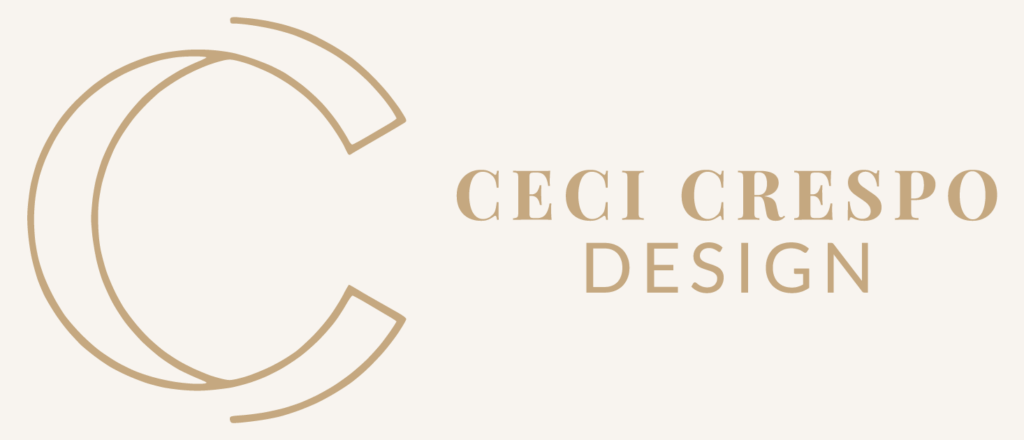Interior Design Process
Transforming your home or embarking on a renovation journey should be a delightful experience. This guide is your key to navigating the process with ease. At Ceci Crespo Interior Design, we blend architecture, interior design, and landscape architecture to deliver outstanding results.
Our mission centers on crafting spaces that nurture emotional connections, providing intimacy, stunning views, and warmth while seamlessly integrating indoor and outdoor environments. We believe your design should embrace natural light, adapt to your daily lifestyle, and create a sanctuary that embodies tranquility and security.

Initial Consultation
In our initial consultation, we collaborate with our clients, thoroughly assessing every facet of the undertaking. This involves grasping the client’s vision and aspirations and identifying potential challenges that may arise along the way. Together, we brainstorm creative and innovative solutions to enhance the result, ensuring that the project aligns perfectly with the client’s expectations and needs.
Personalized Proposal
Every successful project starts with a customized proposal that aligns design with financial investment. In this vital initial phase, we offer a range of inspirational references, materials, and concepts, focusing on exploring possibilities rather than presenting final solutions. Our goal is to grasp the client’s vision and aspirations fully, paving the way for a cohesive design strategy. Moreover, we develop a personalized financial proposal that outlines the project’s scope and the available options, promoting transparency in pricing and feasibility at each stage.
Depending on the project’s complexity, we offer various services, ranging from specific advice to detailed designs for a single room or the entire home. Each proposal serves as a vital first step toward creating functional, harmonious, and well-planned spaces, ensuring that every decision is made with innovative and sustainable investment.
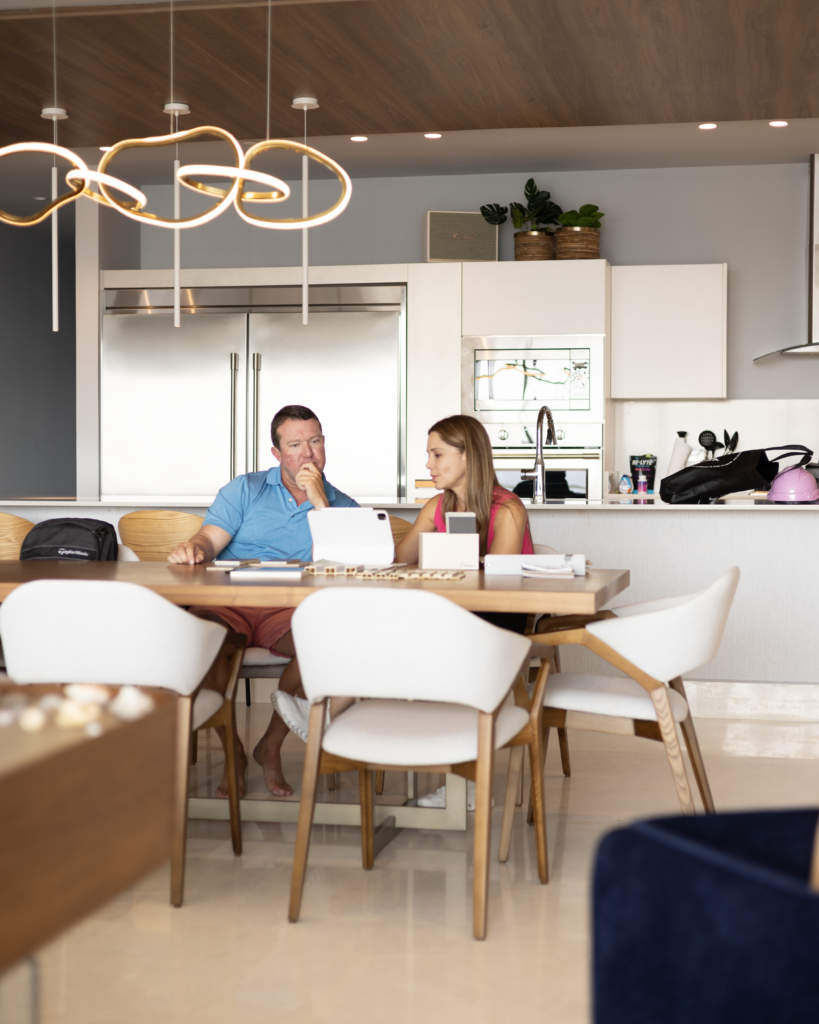
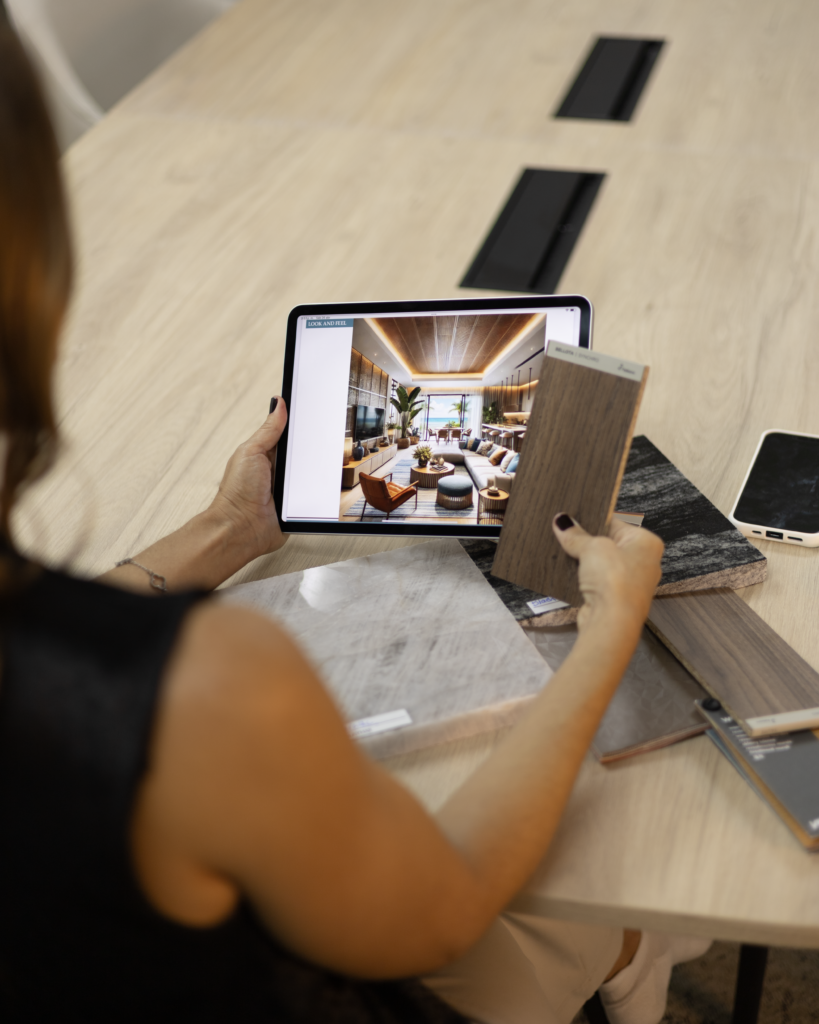
Schematic Design
Once the economic proposal is approved, we move to the stage where the project takes shape. In this phase, we develop a design incorporating top-quality materials, preliminary specifications, and visual representations that accurately reflect the final outcome.
We explore various layouts and finish options to ensure every detail is integrated harmoniously and functionally. Once the concept is defined, we refine the design in collaboration with the client to create a solid, well-structured proposal.
It is important to note that we finalize the design during this phase. Any significant modifications at this juncture may require changes to the architectural or engineering plans, potentially affecting costs and delivery schedules. Therefore, we work strategically to ensure each decision aligns with the project vision and the intended investment.
Collaboration and communication throughout this process are key to achieving an impeccable result while minimizing the risk of unforeseen events.
Design Development and Technical Drawings
We are now entering the critical phase of developing our working drawings, which will be meticulously refined at the next stage of the construction documents for our builder’s use. This phase is essential as it involves creating comprehensive floor plans, optimized furniture layouts, and precise lighting and electrical plans alongside detailed interior elevations. We will also establish initial details and specifications to ensure every element aligns with our vision. We will finalize materials and finishes to achieve the desired aesthetic during this process. It will be our priority to closely monitor the construction budget throughout this phase, as it is crucial to keep us on the right path.
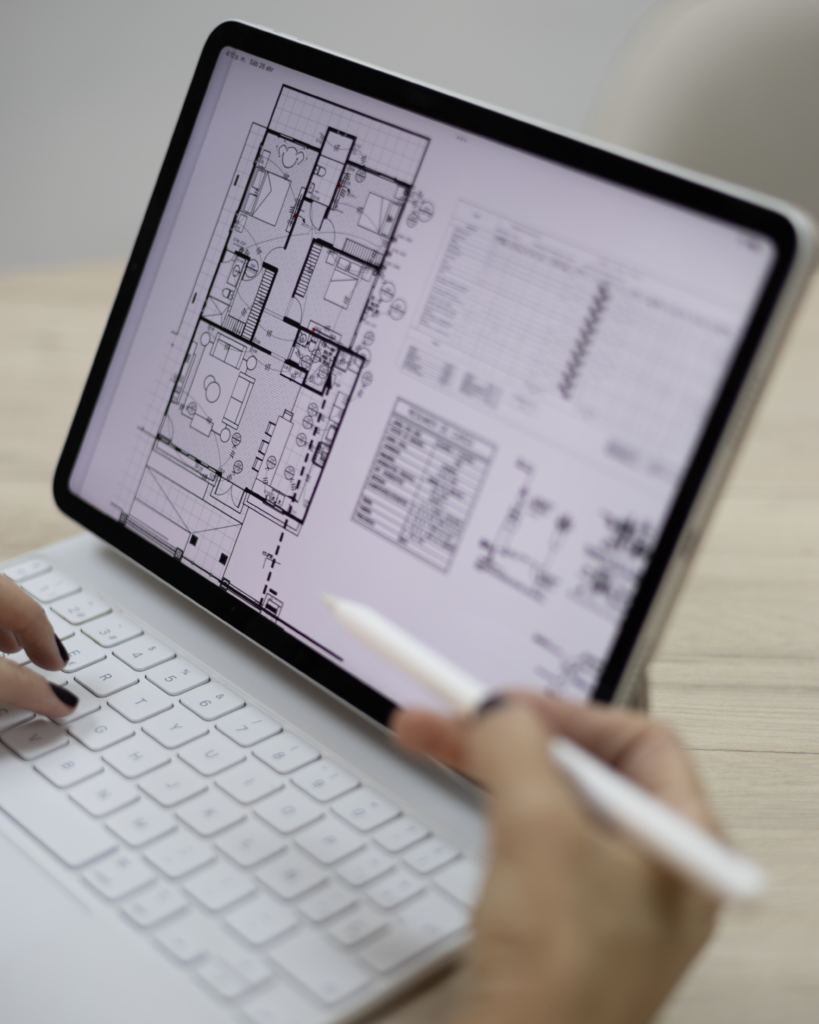
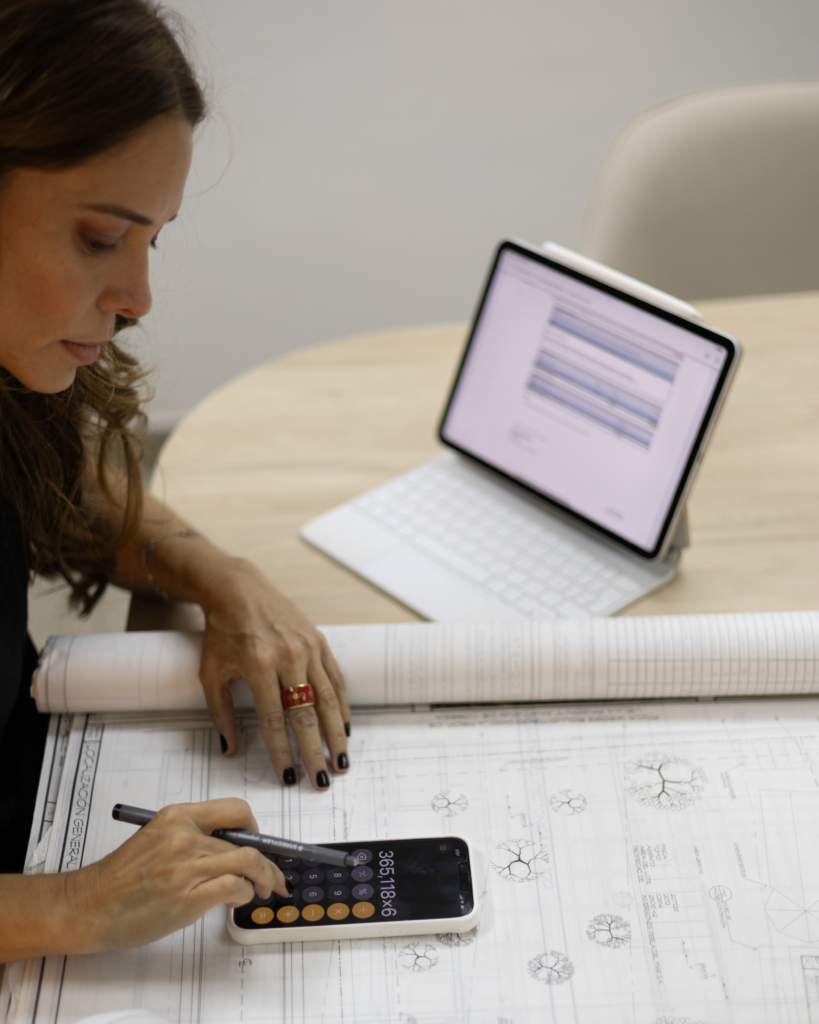
Budget and Bidding
The final construction plans and specifications are complete at this stage, allowing us to establish the projects budget and select the most suitable builder.
The builder selection process is crucial for ensuring a seamless execution of the project. We rigorously assess and evaluate each builder’s experience, past work, and reliability, ensuring their approach aligns with the project’s requirements. We recommend conducting interviews between the client, architect, and shortlisted builders to foster trust and compatibility.
During this critical phase, we refine essential details to prevent unforeseen events and optimize costs effectively. Decisions regarding skirting boards, finishes, and the planning of hidden systems such as air conditioning and climate control all come into play.
We do not choose builders solely based on the lowest bid. Our experience has demonstrated that prioritizing quality and effective management mitigates future complications and safeguards the client’s investment.
Construction Administration
The collaboration between the builder and the architect is crucial for the success of any project, emphasizing the importance of teamwork to drive outstanding outcomes. Throughout the construction phase, we diligently oversee the process to guarantee that the design is executed correctly and offer the builder essential support for any clarifications. The architect depends on the builder’s expertise to ensure the project is completed on time and within budget, while the builder must proactively anticipate design requirements and manage subcontractors efficiently. The architect monitors construction progress, validates billing, and ensures adherence to all contractual commitments.
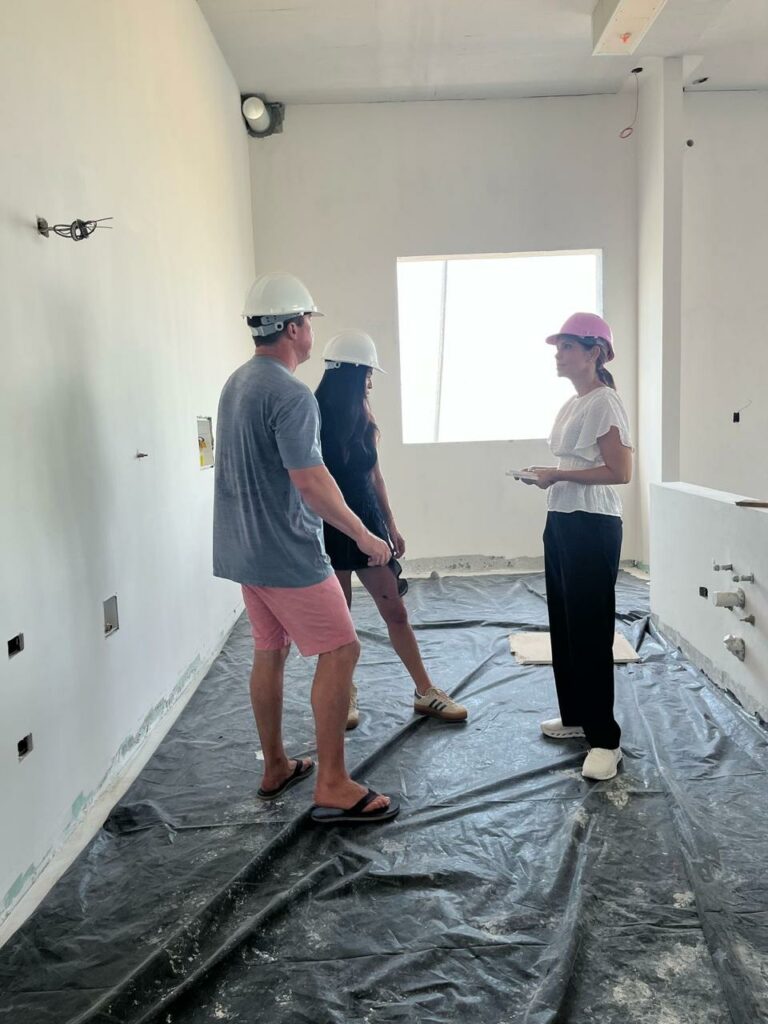
Fees and Timeline in Interior Design
When considering architecture and design services, it's essential to understand the different fee structures and what influences them. Architectural firms typically operate on a time-based fee model, which means that the more time and attention spent on a project, the higher the costs will be. A lower fee often signals less time and care being devoted to your design, which can adversely affect the design quality and the precision of the information supplied to builders. This lack of attention to detail can result in budget overruns and delays due to missed elements or last-minute alterations.
Remember, you usually get what you pay for in terms of time and thoroughness. A low fee can result in poorly detailed drawings with minimal oversight, which may omit crucial information required for constructing your home. Insufficient or inadequate details can lead to inaccurate budgeting and rushed critical decisions during construction, resulting in delays, changing orders, and costly mistakes.
Design fees reflect the firm’s talent, experience, and specialization. While hiring a skilled architect or designer may be more expensive, the long-term benefits often outweigh the initial costs, yielding effective problem-solving and cost efficiencies. A seasoned professional will present well-organized, detailed drawings tailored to your needs. Not every project requires the same level of detail, but a knowledgeable design
firm will empower you to make informed choices based on your budget and aspirations.

